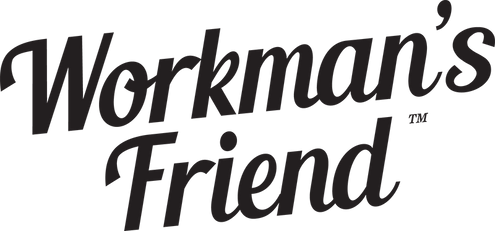What do electricians, paper mill workers, and pharmacists have in common? Yes, they may all use Workman’s Friend Barrier Skin Cream while on the job. But more importantly, they all work in a hazardous environment. We know what you’re thinking, how can a pharmacy be a dangerous place to work? It’s not the equipment they’re working with but the materials they are using that can create the unsafe working conditions. If a pharmacist mixes their own chemical compounds and combines the wrong products or in incorrect amounts there is a risk of a flash fire. If pulp and paper mill workers don’t take the necessary precautions including keeping their work environment clean a combustible dust explosion could occur. The same could be said for electricians. One mistake in their line of work may result in a fire arc putting themselves and others in grave or mortal danger. That’s when wearing Fire Resistant Clothing (FRC) on the job becomes not only handy but necessary for a safe work environment.
Related: 4 Tenets of Welding
But what does this have to do with Workman’s Friend Barrier Skin Cream ? Our product is not fire retardant, nor does it protect from the heat. But what it does do is keep these workers’ hands moisturized while not interfering with the effectiveness of their fire resistant clothing. In addition to the protective gear they wear, Workman’s Friend is one more form of protection-a hydrating one, all in one easy step they apply before beginning their work for the day.
The Law
In 2010, the Occupational Health and Safety Department introduced new regulations that stated fire resistant clothing (FRC) must be worn at all times for the industries that are at risk for flash fires or electric-arc flash hazards. This new regulation caused many people that were in industries where fire was a concern to race out and buy any and all FRC clothing. Often what was purchased was cheaply made or ineffective proving to be a costly error in more ways than one.
Not all FRC is the same
There are many kinds of FR clothing that need to be carefully considered before you or your company decide which solution is best suited for your fire safety needs. Factors such as level of protection, weight and the design of the garment can vary drastically. The feel, comfort-level and look of a fire resistant garment depend greatly on the aforementioned factors.
In a rush to meet these new regulations many companies moved quickly to purchase garments that were NFPA 2112 certified. This is the National Fire Protection Association’s standard on flame-resistant clothing for the protection of industrial personnel against thermal exposures from fire. They quickly learned that just because a garment is rated NFPA 2112 doesn’t mean it will protect in all fire situations where exposure time and heat temperature can vary greatly.
What to look for in FRC
There are two separate kinds of FRC fabrics that are used to produce this type of speciality clothing: treated and inherent FRC.
Inherent FRC fabrics are constructed to be flame resistant for the life of their product because they have fire resistant properties weaved into the material at the molecular level. This type of advanced protection doesn’t simply wash or wear out of the garment. It is there for the lifespan of the clothing.
Treated FRC fabrics must undergo a chemical application process that renders them fire resistant. Unlike inherent fabrics, treated ones will begin to lose their effectiveness as they are exposed to abrasion, UV light and regular laundering. Often wool or cotton are used as the FRC treated fabrics. But issues with shrinkage have made these garments uncomfortable and harder to wear. There is a general misconception that all fire resistant clothing regardless of the treatment process is the same or interchangeable. This couldn’t be farther from the truth.
Levels of Protection
FRC is usually chosen based on the employer’s hazard analysis. This determines the chance of a fire incident in the work environment. There are four different categories of personal protective equipment or PPE (which FRC is a part of) based on specific job tasks. These categories are specified by the National Fire Protection Association. For example, jobs that fall into a PPE category 1 might be required to wear a single layer of FRC including a shirt, pants or coveralls. By comparison, a category 4 might stipulate that a worker must wear a shirt, pants in addition to a double-layer switching coat and pants.
A Safe Place to Work
There are many different factors to explore and investigate for anyone wanting to purchase fire resistant clothing. As an employer or worker it’s imperative that you choose a garment that meets all the OSHA regulations. You must choose a style and weight of fire resistant clothing that is suitable to your work environment in addition to thinking about the wear life of the garment and cost. With all the choices available on the market today, choosing the right FRC can be overwhelming. Remember, any fire resistance clothing is better than none at all.
-------------------
Workman’s Friend Barrier Skin Cream is light-weight and odourless product. Before starting your next messy project, apply a dime-sized portion of our non-greasy, formula on each hand. Then rub them together to ensure the cream has been properly absorbed.
